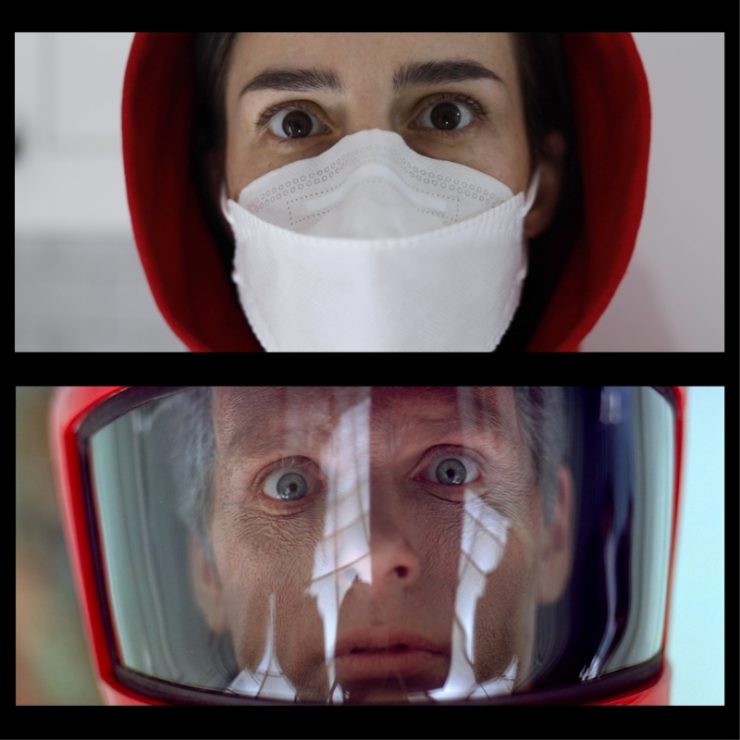The final, climactic scene in Stanley Kubrick’s 2001: A Space Odyssey confounded audiences when it was first released: Astronaut David Bowman enters a monolith orbiting Jupiter and after being transported through space, finds himself in an ornate bedroom, where he sees several different versions of himself.
It’s a powerful scene, and over the course of this past spring while in quarantine in New York City, designer Lydia Cambron reimagined it (via Kottke) through the lens of COVID-19.
Artistic types with plenty of free time while cooped up in their homes have been turning their talents to various film projects over the course of the pandemic this year, producing isolation anthology films, web series, short films, and more. Cambron’s homage is the latest example.
The project unfolded between March and May in Cambron’s one-bedroom apartment in Brooklyn. She notes that her film, 2020: an isolation odyssey reimagines the final scene, adapting “to the mundane dramas of self-isolation–poking fun at the navel-gazing saga of life alone and indoors.”
The stacked videos and synced movements also reveal parallels in emotion. The narrowness of daily life in a single space, transitioning from confusion to acceptance, a distorted sense of time, and ‘returning’ after a transformational event–all experiences analogous to quarantine.
The adapted version delineates the passing of time through wardrobe rather than age, identifying each phase of the character’s journey with a product of self care or PPE. Tools of private entertainment or self betterment are also used as props, questioning our confidence in products and productivity as anchors during times of uncertainty. Multitasking while #wfh, conjuring guilt or longing with unused exercise equipment, your entire being reduced to a measure of time–these scenes all illustrate the absurd comedy of trying to maintain control during this unprecedented and unpredictable time.
The result is stunning: Cambron recreates Bowman’s red space suit with a red hoodie and white face mask, and carefully replicates the camera movements and framing from the original film precisely, capturing the sense of isolation and hopelessness that many felt at the height of the lockdowns throughout the country this spring.










